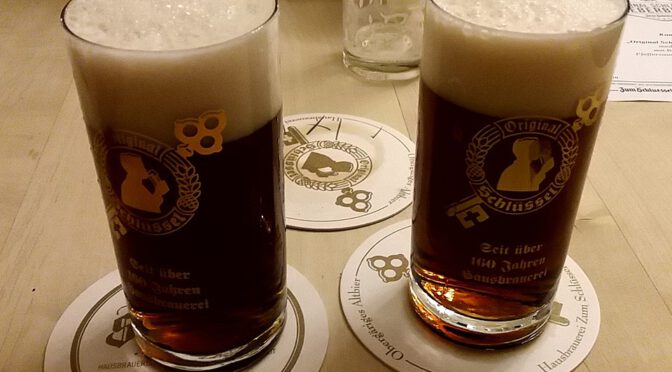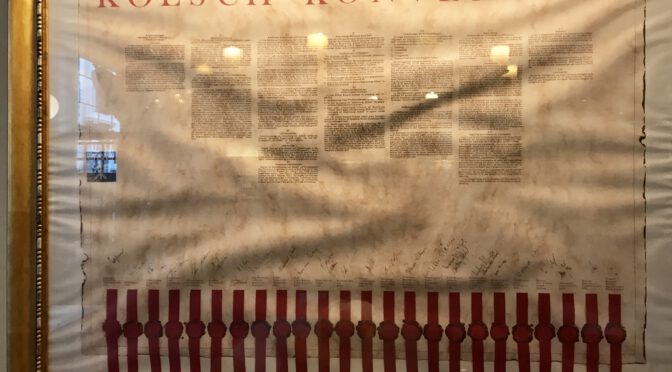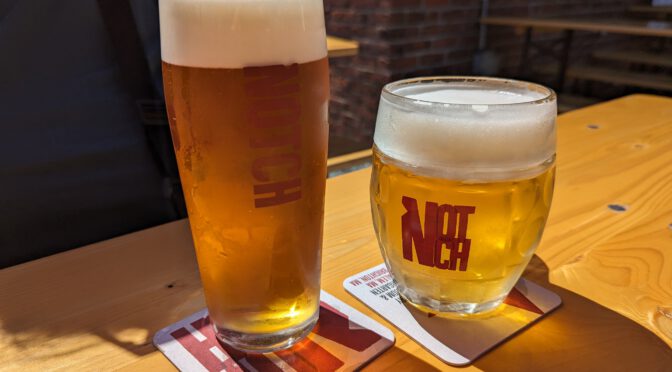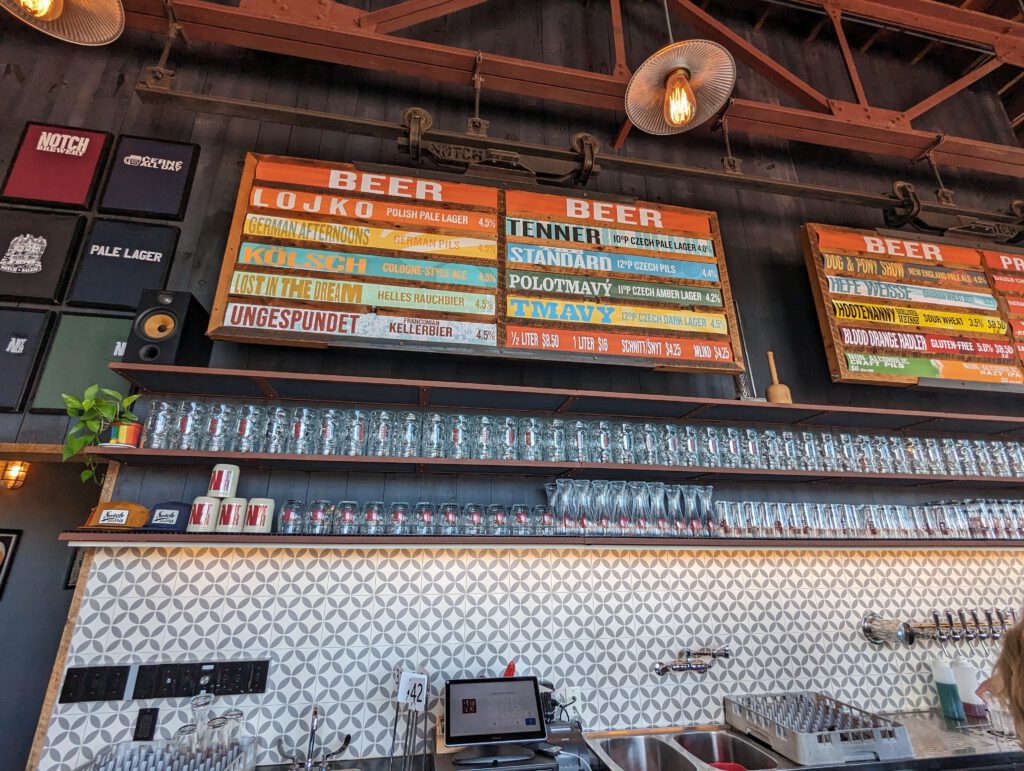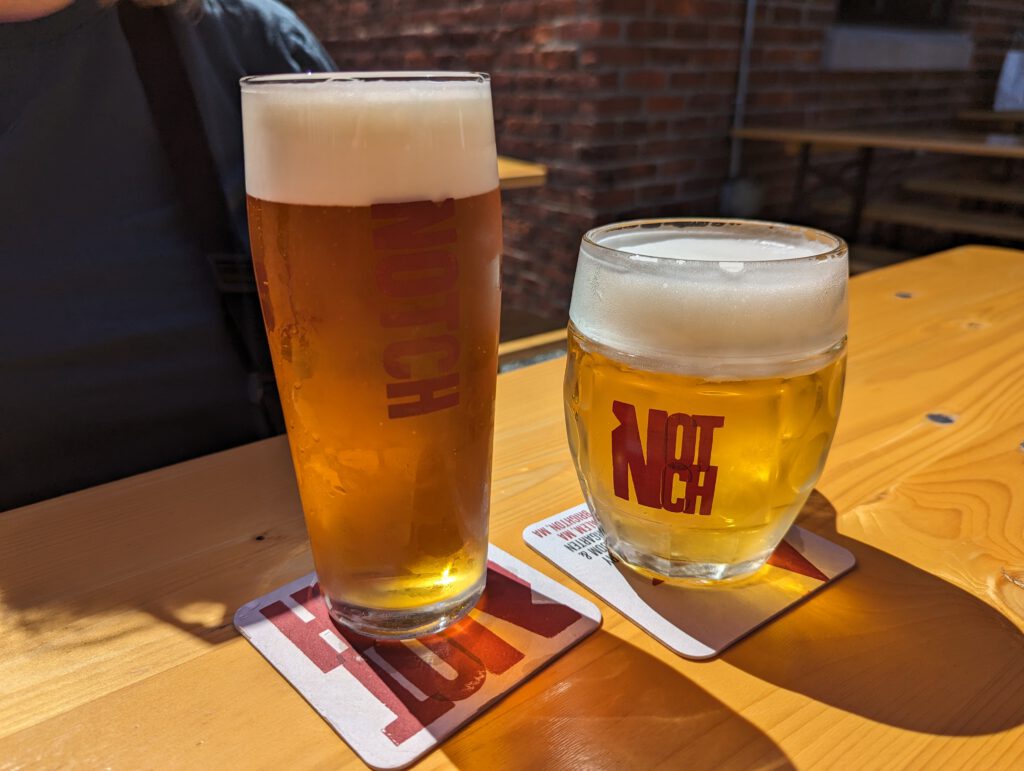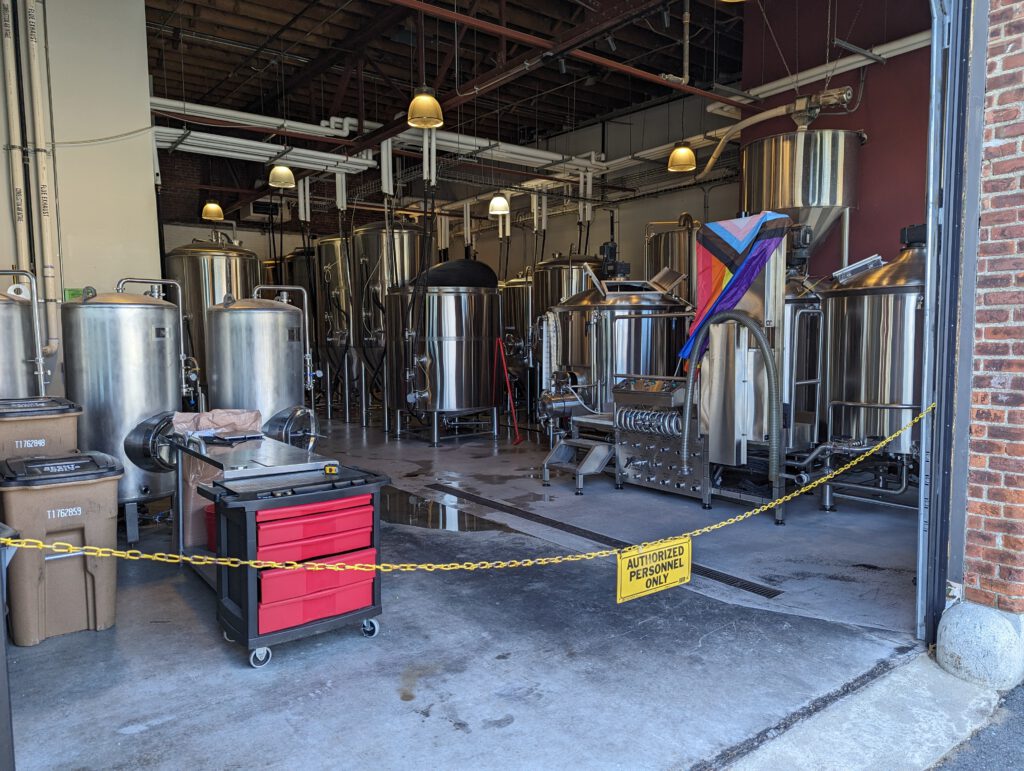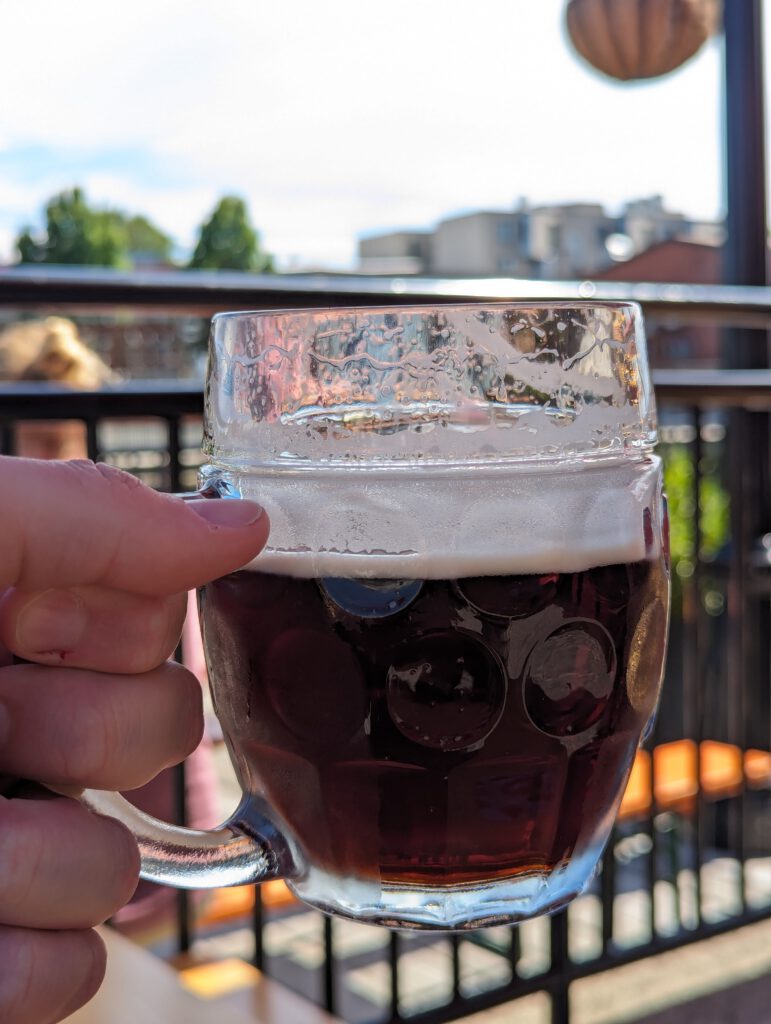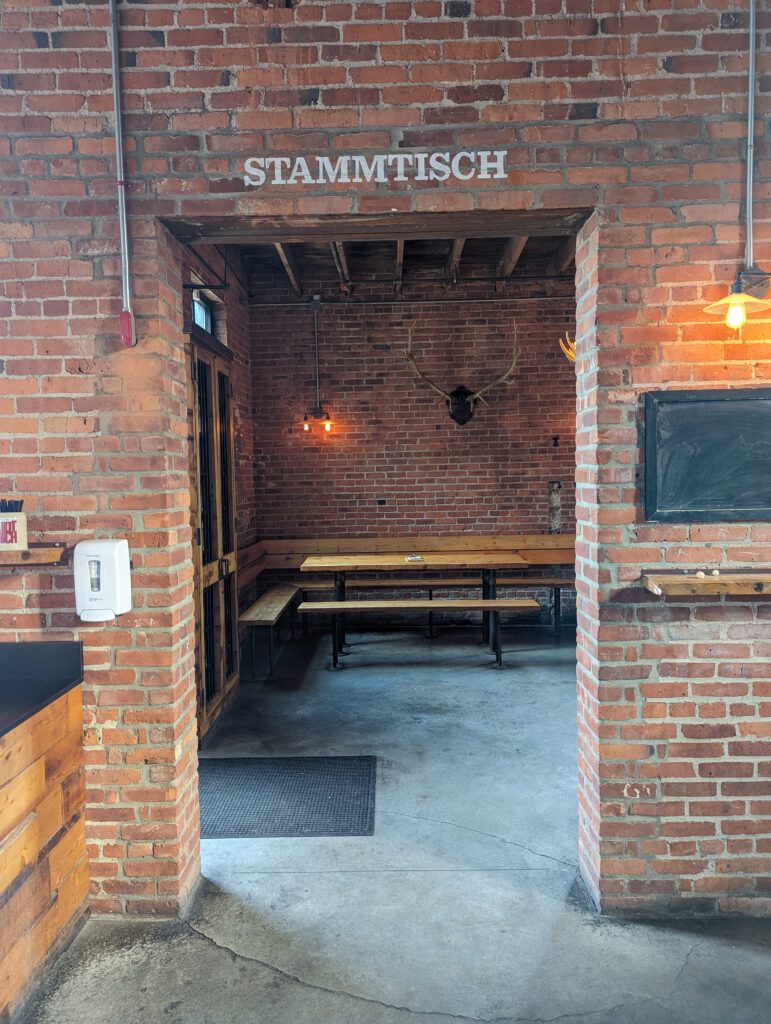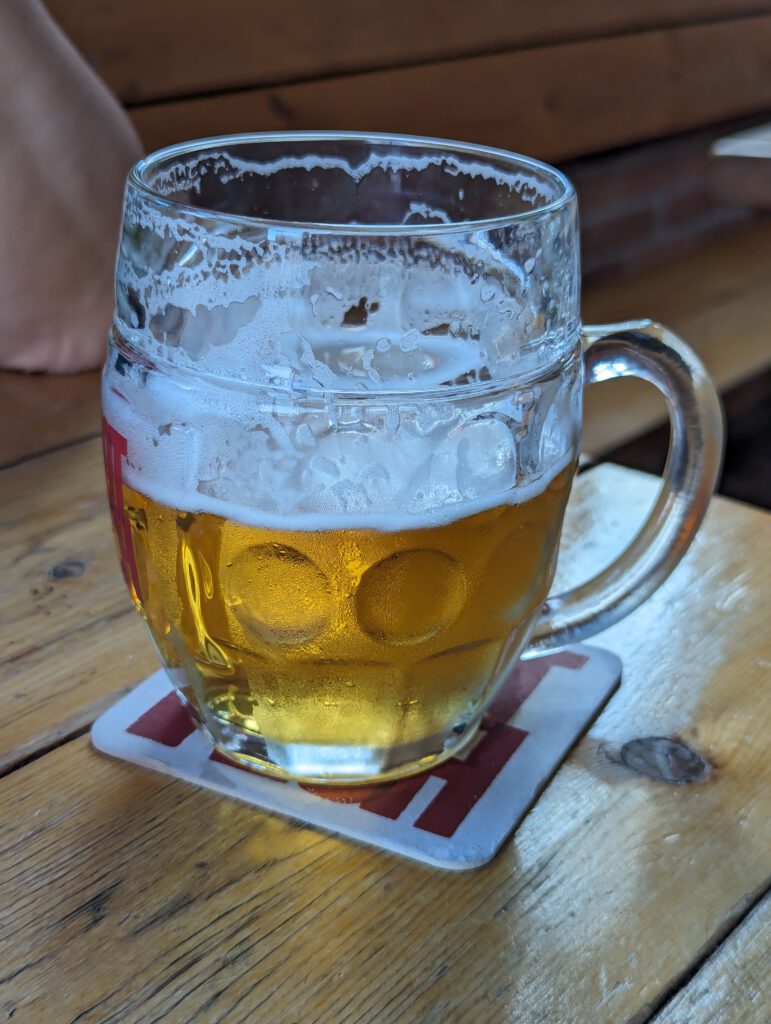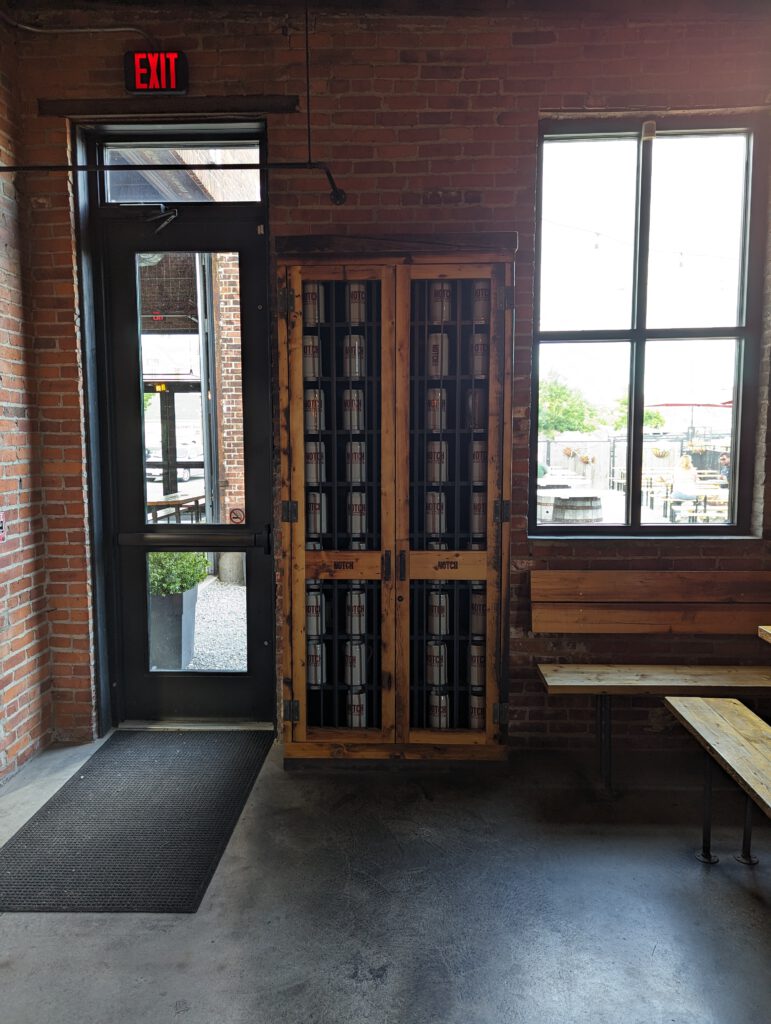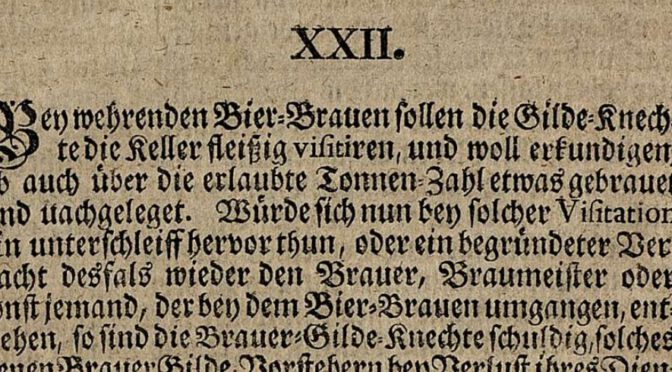A few days ago, I interviewed Franz Pozelt about the topic of Kölsch brewing and its history. Franz learned the trade of brewer and maltster at Sünner brewery in Cologne, is an avid homebrewer, active in the local homebrewing scene in Berlin, and running the beer and brewing group of Slow Food Berlin. So naturally, he knows a lot about Kölsch, and so I asked him to share his knowledge in an interview.
You did an apprenticeship as brewer and maltster at Sünner in Cologne. Can you tell me something about the apprenticeship?
This was a while ago, I started my apprenticeship in 1969. A few weeks ago I met someone by coincidence who, maybe about 10 years ago, maybe a bit earlier or later, also was an apprentice at Sünner. The frightening thing is, it hasn’t changed so much since then, that means, an apprentice was primarily manpower. During my apprenticeship I was mostly working in the fermentation and lager cellar, my acquaintance in kegging. At the same time Sünner also have a tradition of apprentices achieving good grades at exams. During my time, the apprenticeship respectively working in the brewery was physically very exhausting. It could well happen that you had to change from the lager cellar at 4-8 °C (the whole room was cooled, not individual tanks) to the brewhouse, removing the spent grain from the lauter tun (“Austrebern”). Austrebern means that you’d climb into the lauter tun, had to remove the remaining spent grains, and clean the lauter tun using a water hose. I don’t know how warm and wet it was in the lauter tun, but I think quite a bit over 40 °C. After that you’d have to go back to the lager cellar.
But there were also rituals that don’t exist anymore. As an apprentice your first work duty of the day was to take a sample from the lager tank (“zwickeln”). Beer from the tank was filled in a 1 liter jug, the jug including content was warmed to a pleasant drinking temperature, a bit warmer than in pubs and restaurants. After the beer has reached its drinking temperature, it was drank directly from the jug together by all attendees. As far as I can remember, this was the job with the greatest responsibility for an apprentice, the beer couldn’t be too cold or too warm, and we didn’t put a thermometer into the beer. These drinking rituals or the cold meals together on Friday afternoons were pleasant experiences that caused a feeling of togetherness. During my “Lehrzeit”, the terms “Ausbildung” and “Auszubildender” were legally only introduced in 1971, I also tried to brew beer at home, and we drank the results within the family, but it wasn’t convincing enough to try it a second time. Most of my work during the apprenticeship was cleaning lager tanks and fermentation vessels, putting up and stacking kegs, and occasionally polishing the copper vessels in the brewhouse. What have I learned? The basics of the malting and brewing process, that Germans drink a lot and make the best beer. The Belgians (North Rhine-Westphalia, as is well known, is bordering on Belgium) do absolutely terrible things, use unmalted grains and sugar, you get headaches from that. In Bavaria other beer was brewed, at that time Bavaria was still deemed as very backwards and exotic, and we had our Kölsch. I accomplished my exams, both the practical and the theoretical part, with “Good” [the second-best grade in the German school system], I just looked at my school report. If I remember correctly, I was one of the best apprentices.
Which beer styles did you brew at Sünner? What was the most popular?
We mostly brewed Kölsch, occasionally also Pils, and at that time very seldomly also Export and “Malzbier”. Kölsch was the most popular beer type, measured by the drinking rituals mentioned earlier the other beers didn’t exist. What was maybe also interesting, we mostly produced keg beer, the share of bottled beer was tiny. At that time Küppers-Kölsch (belonging to Wickühler), the market-dominating bottle beer brand, wasn’t available in kegs or only in such small amounts that I never noticed it.
You once told me that Pils was a very common beer style in Cologne. How did it get to that, and why and when did Kölsch become synonymous with beer in Cologne?
Already during my apprenticeship it was whispered to me that Kölsch didn’t use to be the main beer. I did some research on this, here are my findings and assessments.
1906, Sünner brewery released a pale top-fermented beer to the market, that started to be called Kölsch from 1918 on. Until Kölsch would become a market-dominating drink in Cologne, it took a few decades, initially it was a niche product. In the 1950’s the ratio of Pils to Kölsch was 80 : 20, today Kölsch has a market share of 90%. This development started after World War 2, and I think it’s related to a clever marketing strategy of the small to medium-sized “craftmanship” breweries. In the 1970’s there were 27 breweries in the Cologne region, one of them a large industrial brewery. The Kölsch beer style changed in the 1950’s to a less-hopped, highly attenuated, foam-stable beer. According to literature, top-fermented beers in Cologne before World War 2 were even dry-hopped. Back to the marketing strategy, the Cologne brewers understood to counter the Pils trend with a top-fermented copy, and to load the beer with regionalism. Why this local identity in Cologne plays such a big role would be a topic for a socio-cultural essay. Today there are still nine Kölsch breweries in the Cologne brewery organization, one of them, the Haus Kölscher Brautradition (Radeberger-Gruppe) which brews 11 Kölsch brands.
What constitutes a Kölsch was defined in 1985 in the Kölsch-Konvention. Do you remember whether Kölsch used to be brewed differently, or were there other deviations to what Kölsch is officially since 1985?
I wouldn’t call it different, but the taste of Kölsch has become more uniform. I remember that earlier, beginning of the 1970’s for example, Päffgen tasted somewhat more bitter and wasn’t as heavily filtered. According to the information that I’ve got, Kölsch nowadays is predominantly hopped with Perle, there is one maltster (Schill) that produces a Kölsch malt, all that contributes to the unification. The Kölsch-Konvention limited Kölsch brewing to Cologne and breweries outside Cologne that had traditionally brewed Kölsch before the Konvention has taken effect, like for example Bischof Kölsch in Hürth (1000 hectoliters/year) or Erzquell Brauerei Bilstein (100,000 hectoliters/year), and thus prevented possible copies of Kölsch through large breweries outside of Cologne. However all the upcoming brewpubs couldn’t call their Kölsch a Kölsch anymore, as it was unfiltered. Braustelle Köln (an early microbrewery, from 2001) advertises their Kölsch (which is not allowed to be a Kölsch) like that: “Helios is a Wieß, the original form of Kölsch, brewed from 100% barley malt, top-fermented and hop-accentuated.”
When homebrewers discuss Kölsch, often “Wieß” as unfiltered, cloudy beer style that is close to Kölsch is mentioned. What did it use to be in the past, respectively what is it like today, was it a niche product, or relatively common?
In the 19th century, there existed up to 100 home breweries with attached pubs in Cologne, there Wieß was drunk, a cloudy unfiltered beer with a share of wheat malt in the grist. This Wieß (in the Cologne dialect “wieß” means “white”) is considered to be the predecessor of modern Kölsch. Braustelle and Gasthausbrauerei Heller, which nowadays also offer bottled beer, brew Wieß. The assumption that it would have been the most common beer in Cologne is misguided, though. At the end of the 19th century the number of home breweries went down by a lot, and several large breweries arose which brewed bottom-fermented beer types like Bräu, Pilsener, Export, Märzen, Bockbier, Lager, Brillant and Kristall.
When you brew Kölsch at home, do you have a standard recipe, or do you vary your recipes? What does a good Kölsch recipe look like for you?
I mostly vary, as a homebrewer I’m not forced to brew a consistent product, and so I always try to optimize. The guideline for the optimization of Kölsch is to brew a beer with high drinkability that still has a character on its own. So far, I’ve always used floor-malted Weyermann Pilsner and wheat malt, sometimes also CaraHell, more recently also Vienna malt and chit malt. Regarding hops, I’ve always tried something new, like Liberty, Perle, Saaz and most recently Bramling Cross, most often in combination with Hallertauer Mittelfrüh. I brew Kölsch with WLP029 yeast. There’s also a Kölsch yeast from Wyeast, and from Schnapsbrenner you can buy a Kölsch yeast from yeast bank Weihenstephan.
Are there any other tips that you can recommend to homebrewers that want to brew Kölsch?
Bestmalz offers a Heidelberger malt and Heidelberger wheat malt with a very low color, between 2.5 and 3 EBC, I would like to try that. Both White Labs and Wyeast specify a recommended minimum temperature of 18 °C for the yeast. I wouldn’t ferment at a higher temperature than that. Fermentation temperature in Kölsch breweries is usually at 14 °C, at most 16 °C. According to an article by Dipl.Ing. Heinrich Becker, “Technologischer Werdegang des Kölsch seit 1900” on the website of the brewers organization of Cologne, pitching temperature is between 11 and 13 °C, and the racking temperature between 12 and 15 °C. The yeasts by Wyeast and White Labs are purported to be yeast from Cologne breweries, so they should be able to deal with these temperatures.

